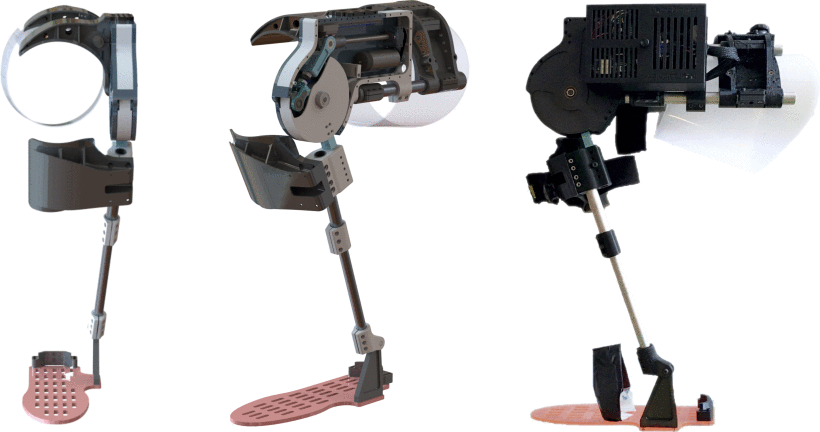Estimation of Knee Impedance
Motivation
The mechanical impedance of the joints of the leg govern the body’s response to external disturbances, and its regulation is essential for the completion of tasks of daily life. However, it is still unclear how this quantity is regulated at the knee during dynamic tasks. To address this need, we propose a method to estimate the mechanical impedance of spring-mass systems using a torque-controllable knee exoskeleton with the intention of extending these methods to characterize the mechanical impedance of the human knee during locomotion.

Torque controllable knee exoskeleton that will be used to measure knee impedance.
Approach
We validated our methods for estimating mechanical impedance by measuring the interaction between our exoskeleton and known mechanical systems. We then compared our estimated values with the independently measured spring-mass system values. The exoskeleton was prescribed an underlying sinusoidal trajectory, upon which perturbations were superimposed. Each spring-mass system was matched to five underlying torque trajectories. Perturbations were extracted by subtracting the exoskeleton’s response to the non-perturbed sine wave from its response to the perturbed sine wave. The extracted perturbations were segmented and analyzed following the onset of the perturbation. Least-squares system identification was used to fit a second-order model of impedance to the extracted data. Our approach was able to obtain accurate estimates of stiffness and inertia, with errors under 3% and ~13-16%, respectively. Future work will extend these methods to data collected from human subjects in an effort to obtain estimates of knee joint impedance during walking.
Contributors: Yves Nazon II, Raveena Doshi
Publications
Nazon II, Y.F., Doshi, R.M., & Rouse, E.J. (2020). Validation of Methods for Estimation of Knee Joint Mechanical Impedance During Locomotion Using a Torque-Controllable Knee Exoskeleton. ASME Journal of Biomechanical Engineering. In Review
